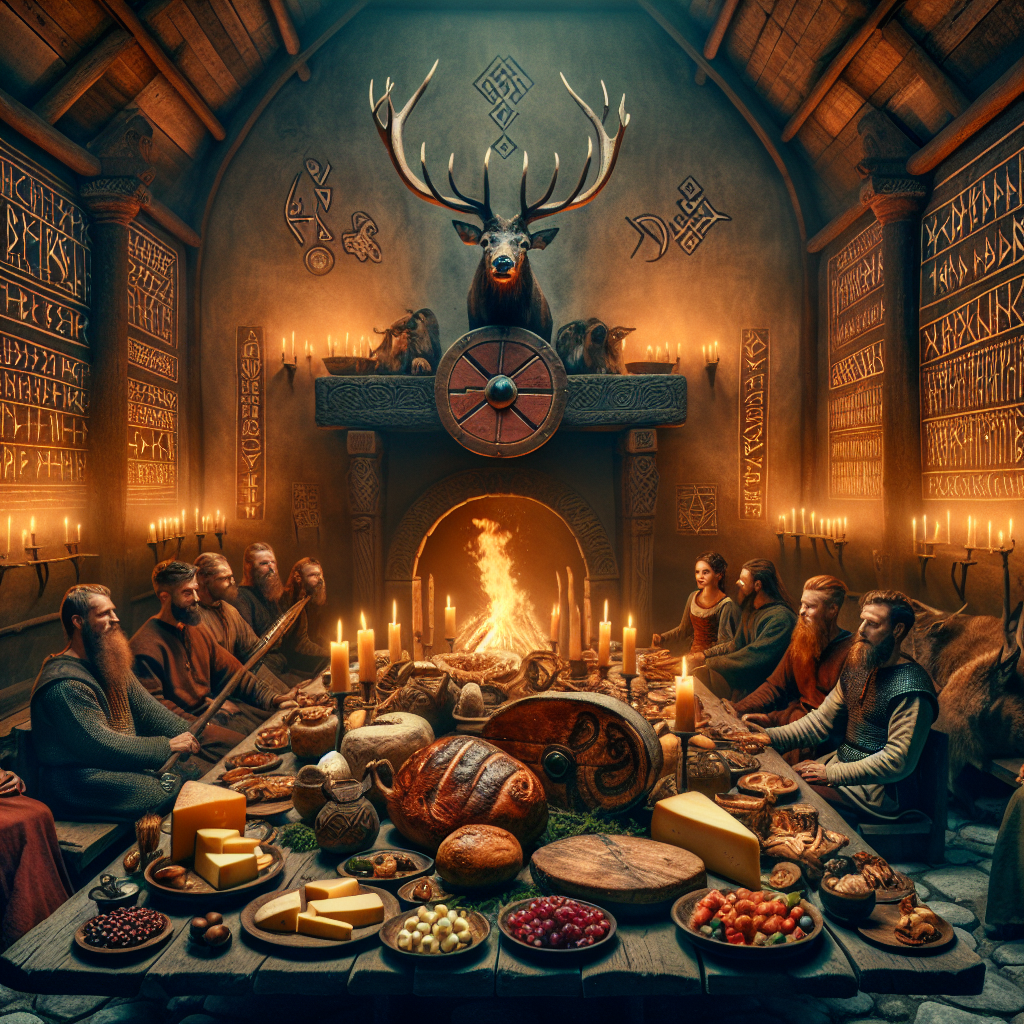Viking Cuisine and Food Culture: From Fermented Delicacies to Feasts
When we think of Vikings, the first images that come to mind are burly warriors, longships, and epic sagas. But beyond their prowess in battle and adventurous spirit, the Vikings had a rich and fascinating food culture that tells us a lot about their daily lives. Let’s dive deep into the culinary world of the Vikings and discover the unique flavors that fueled their legendary journeys.
The Viking Diet: A Balance of Land and Sea
The Vikings were masters of their environment, relying heavily on both land and sea for sustenance. Their diet was a diverse blend of grains, meats, seafood, and foraged foods, ensuring they had the energy needed for their rigorous exploits.
- Grains: Barley, rye, and oats were the primary cereals. They were used to make bread, porridge, and gruel.
- Meat: Domesticated animals like cattle, sheep, pigs, and chickens provided a steady source of meat. Hunting also played a role, with elk, deer, and wild boar being occasional treats.
- Seafood: The Vikings loved their fish! Cod, herring, and salmon were staples, often dried or smoked to last through the winters.
- Foraged Foods: Berries, nuts, and wild greens were foraged during the warmer months and added essential vitamins to their diet.
Fermented Delicacies: The Viking Pantry’s Lifeline
No Viking feast would be complete without their famed fermented foods and drinks. Fermentation was not just a method of preservation; it was a vital part of their culinary identity.
- Sourdough Bread: This tangy delight was a daily staple, made using wild yeasts that fermented the dough over time.
- Skyr: A thick, yogurt-like cheese that has recently regained popularity. Packed with protein, it was a Viking superfood.
- Pickled Foods: From fish to vegetables, pickling was essential. Imagine jars filled with pickled herring – a taste that needs some getting used to!
- Mead: This fermented honey drink was the toast of every Viking celebration. Sweet, intoxicating, and sometimes spiced with herbs, it was their drink of choice.
Feasting: Celebrations of Viking Life
The Vikings loved to feast. Social gatherings were marked by grand meals that showcased their culinary skills and the bounty of their larder. These feasts were more than just about food; they were a celebration of community, bravery, and the harvest.
Meat and More Meat: Roasted meats were the highlight of any feast. Imagine a longhouse filled with the aroma of spit-roasted pork, lamb stews, and hearty portions of wild game.
Communal Eating: Feasting was a communal affair. Large trenchers (thick slices of bread) often doubled as plates, soaking up the juices of the meal and providing an edible dish.
Storytelling and Music: No Viking feast was complete without bards recounting heroic sagas and musicians playing instruments like the lyre and horn. The clinking of drinking horns filled with mead and ale added to the merriment.
Modern Interpretations: Bringing Viking Flavors to Your Table
Curious about recreating some Viking magic in your own kitchen? Here are a few modern interpretations of their age-old recipes.
- Sourdough Bread: Try your hand at making sourdough using a wild yeast starter. The tangy flavor is a nod to Viking bread.
- Skyr Smoothies: Blend skyr with berries and honey for a protein-packed, Viking-inspired breakfast.
- Pickled Herring: While it might not be everyone’s favorite, those daring enough can enjoy this Nordic delicacy.
- Mead Cocktails: Experiment with mead by creating cocktails. Mix mead with ginger beer and a squeeze of lime for a refreshing drink.
In conclusion, the Viking culinary heritage is a testament to their resourcefulness and a celebration of their connection to nature. Whether you’re digging into a hearty platter of roasted meat or sipping on some homemade mead, embracing Viking cuisine is a delightful journey into the flavors of the past.
So, next time you raise a toast, make it a Viking toast – Skål!
